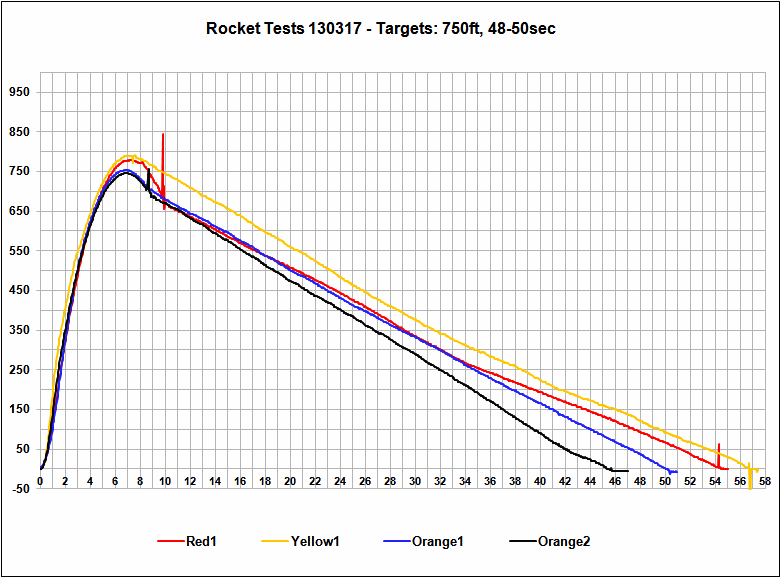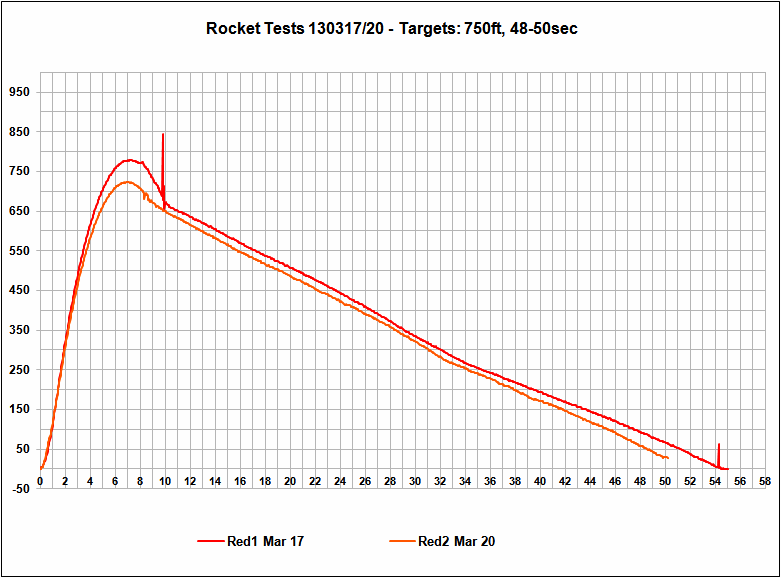|
|
 Lessons Lessons
- All three teams had a good first test launches. They went straight in windless
conditions. Their altitudes were consistent with their weight. Team 13254's yellow rocket flew too high
at 378g, so a suggested target weight would be about 385g to 390g Team 13255's red rocket flew a little
too high at 392g, so a suggested target weight would be about 396g to 400g. Team 13256's orange rocket
flew just right at 378/382g. so their target weight should be 380g.
- We used recent purchased E20-7W with larger igniters in the package.
We still had igniters spitting before they ignited the propellant.
In looking at the igniters before launch, I believe they were all placed correctly. We have no
correction for spitting.
- The descent times were all long except for the launch in the blowing snow. The spill
holes seemed to reduce oscillation and control the descent. Team 13254's yellow rocket needs a slightly
larger spill hole. Team 13255's red rocket needs a spill hole around 2-3 inches. Team 13256's orange
rocket parachute seems to be just about right.
- Team 13256's orange rocket didn't deploy the streamer on their first flight. The
tape between the streamer and the chute was not tight enough and the chute protector plug didn't push
out the streamer. We have never had the streamer and chute get entangled, or have the tape stay
connected, so making it too tight is less risky than making it too loose.
- All rockets were recovered, no eggs were broken, good job.
|
Launches
|
Rocket |
Engine |
Rail |
Cargo |
Cargo
Recovery |
Booster Recovery |
Weight |
Results |
Comments |
Yellow test 1
Team 13254
no video |
E20-7W |
1d |
1 egg,
altimeter 1 |
15" Round,
2" spill |
6x60" Streamer |
378g |
789ft, 57sec |
Flew straight |
Red test 1
Team 13255
video |
E20-7W |
1d |
1 egg,
altimeter 2 |
15" Round |
6x60" Streamer |
392g |
778ft, 54sec |
Flew straight |
Red test 2
Team 13255
video |
E20-7W |
1d |
wood egg,
altimeter 2 |
15" Round,
3" spill |
6x60" Streamer |
400g |
722ft, 50sec |
Flew into wind a little
(flew March 20) |
Orange test 1
Team 13256
video |
E20-7W |
1d |
1 egg,
altimeter 3 |
15" Round,
2" spill |
6x60" Streamer |
378g |
753ft, 50sec |
Flew straight, streamer didn't deploy |
Orange test 2
Team 13256
video |
E20-7W |
1d |
1 egg,
altimeter 3 |
15" Round,
2" spill |
6x60" Streamer |
382g |
745ft, 44.90sec |
Flew into wind a little
Qualification Score: 17.40 |
Altimeter Data
(Excel format)

Following the curtailed launch on Sunday, we went out to try a launch with a 3in spill hole on the 13255's red rocket parachute.
We also increased the weight of the rocket to 400g. We traveled to National Pike Park on Wednesday, March 20. The wind was light and temperature was about 40F.
The launch was a little into the wind because the launch rail was not angled enough, but recovery was normal. The large spill hole had almost no effect on the descent rate.
Altimeter Data - (two red rocket launches)
 |



